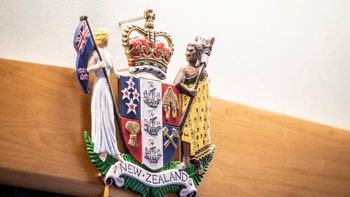
Spark says the number of households on its Skinny Jump programme, which offers free or subsidised internet, has surged - which the telco puts down to "Kiwis feeling the pinch from the cost-of-living crisis".
The telco's non-profit Jump initiative provided wireless broadband for some 4000 households pre-Covid.
By August last year, that number had jumped to 15,000, in part because of the pandemic remote learning boom.
This morning, Spark reported 22,000 on Jump connections.
"While Kiwis across the country are feeling the squeeze of rising inflation, for some households these extra costs could mean having to choose between buying food to feed the family or paying the power bill to keep warm in winter," Spark CEO Jolie Hodson says.
"Unfortunately, for many of these households having an internet connection at home can be a luxury they just can't afford."
Hodon adds, "Not being able to get online is no longer just an inconvenience – it means missing out on access to key services such as online banking, not being able to work remotely and kids falling behind at school."
Spark has just bumped up Jump data allowances.
Eligible students in low decile schools and new refugees can access Jump for free for a year.
Others get their first 15 gigabytes of data free. 35GB of data costs $5 per month, with up to six top-ups allowed (allowing for up to 225GB for $30 a month - or enough for regular school and remote office work, plus some light Netflix streaming).
Late last year, UFB fibre network operator Chorus said the average Auckland household had increased its monthly data use from 379GB per month to 619GB per mont between October 2019 and October 2021, while the average Northland household hand increased from 274GB to 334GB per month over the period.
As Jump is a subsidised broadband product for communities in need, it is not available in-store or online, but via a network of around 300 community partners across the country, Spark says, including local libraries and community centres. Partners are listed at skinny.co.nz/jump.
The telco says to talk to a Jump community partner about eligibility, but that those "probably eligible" include:
- Families with children in low decile areas
• Job seekers
• Seniors
• People with disabilities
• Refugees and migrant communities
• Those in social housing
Last year Spark Foundation launched two new programmes that offer Jump free to eligible households:
- The Ciena Jump for Students Fundwhich eligible students from Deciles 1 to 5 schools a free Skinny Jump wireless modem and broadband connection – including 210GB of free data per month. There are currently over 300 students across NZ using this service, the telco says, and;
- The 'Awhi Matihiko: Red Cross Digital Settlement Package, a collaboration between the Spark Foundation, New Zealand Red Cross, InternetNZ and the Digital Inclusion Alliance Aotearoa, which offers new refugees Skinny Jump (with data paid for 12 months), a Chromebook laptop, and if required, digital skills training.
"We know that internet access isn't a silver bullet that's going to solve digital equity on its own," Hodson says.
"But for the one in five Kiwis who may be facing digital exclusion, it gets them to the starting line. Ultimately, having affordable access means more Kiwis have an opportunity to participate in the digital world."
The skinny on Skinny Jump
While Jump connections increased by 58 per cent to 15,000 in 2021, Spark said in its annual report that it was shooting for more.
"Our aspiration for FY21 was to reach 20,000 homes, however this target was not achieved. We proactively manage the number of wireless broadband customers we have by location, to ensure all customers have a good user experience on our network. During the year we discovered that some areas of need are at capacity. To remedy this, we are
prioritising the rollout of our 5G network in these areas, and upgrading 4G at the
same time, to boost capacity for Skinny Jump in FY22."
Spark's ongoing 5G upgrades seem to have delviered the the desired capacity boost.
This morning, a spokeswoman for the telco said there is no ceiling on the number of households that could be added to the Jump programme, if they meet the eligibility criteria.
Wireless broadband is an cheaper, easier to install alternative to a UFB fibre landline, suitable for households with light to moderate internet use. It uses a mobile network to deliver broadband to a home or broadband, via a special modem, which is then shared by wi-fi. (See the Commerce Commission's ranking of different broadband technologies here.)
Other measures
Telcos have offered a range of relief measures during the pandemic, with Spark, Vodafone and 2degrees abolishing data caps and relaxing credit terms for a period, while Chorus delayed wholesale price increases.
The Government made $87 million available for computers and internet under a pandemic measure to support 82,000 homes with school-aged children who were not online as the country went into its first lockdown in March 2020, with some 17,000 modems dispatched. The programme was criticised for delays, and reports of hundreds of modems going to wealthy schools that didn't need them, while InternetNZ said it was disappointed that Budget 2021's "lack of digital inclusion policy" - an area that again got scant attention in Budget 2022.
Take your Radio, Podcasts and Music with you









